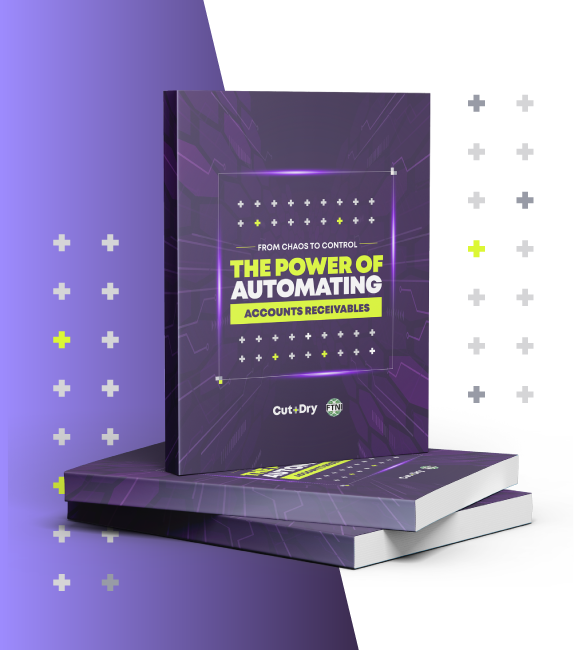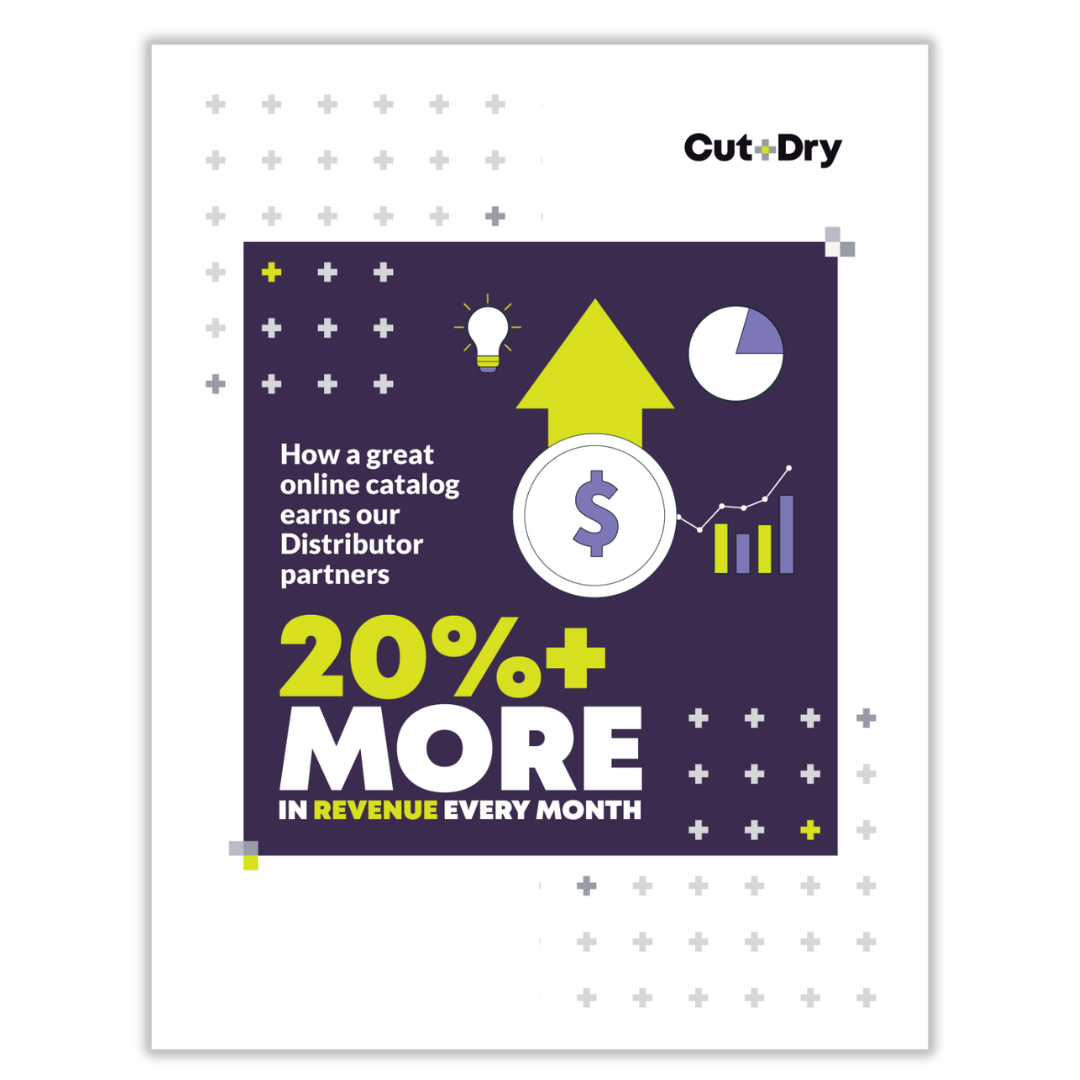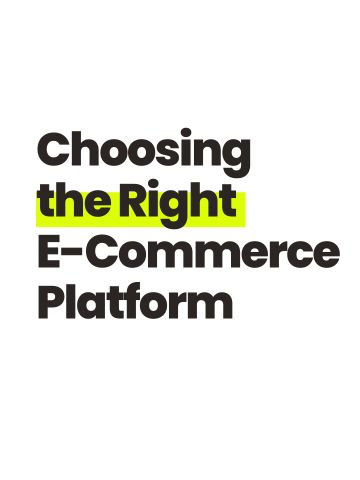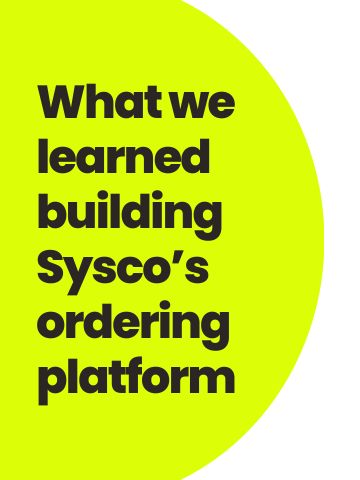In today's fast-paced world, technology is the game-changer. It sets successful foodservice distributors apart by streamlining operations and enhancing efficiency. For those in the industry, e-commerce platforms are a prime example and the ripest opportunity.
Going digital is not a choice; it is a necessity. Your customers are so accustomed to e-commerce platforms like Amazon, that they expect in all aspects of their life. Here’s your guide on how to choose the right e-commerce platform for your business.
Benefits of E-Commerce Platforms for Foodservice Distributors
- Increase Sales: Give your customers 24/7 access to your catalog so they can order any time of day and find new items in seconds. Lowered friction increases the number of orders and average order value.
- Greater Convenience: Simplify the ordering, payments, and tracking process for customers. Offering 24/7 flexibility will build loyalty.
- Streamlined Operations: E-commerce should bring efficiencies, not take up more of your team’s time. The right platform will reduce human errors, increase your sales reps’ time to sell, and enhance efficiency.
Step 1: Find the Perfect Fit
Like pieces of a puzzle, your e-commerce platform should seamlessly fit into your operations and drive sales. While many options exist, understanding the benefits and features of each is an important step in ensuring you’re satisfied with the experience.
For example, let’s look at the restaurant industry. Uber Eats evolved out of Uber – the disruptor, offering passengers and drivers a seamless experience that didn’t exist before. Benefits aside, the costs involved with online ordering apps can become a burden, especially for smaller operations. A case study involving Uber Eats highlighted that, despite being popular, third-party delivery apps can devour a significant portion of the customer's bill. The study found that such apps took 15-30% of the order cost, impacting restaurant profits.
Always do your homework when choosing an e-commerce platform. Weigh the costs and be sure that you’re looking for a provider that benefits your already established business.
Key Features to Look For in an E-Commerce Platform
Attractive E-Commerce Catalog: Strive for a personalized, Amazon-like shopping experience – that's what today’s customers want. Find an app that offers options like high-quality images, product details, and a seamless checkout experience. As a distributor, payment isn’t necessary at checkout, but eliminating friction should be top priority.
Order Tracking & Real-Time Updates: Stop taking “Where’s My Truck” Calls. A report found that 90% of customers expect real-time tracking and updates for their orders. Be sure your customers can track their orders and know when deliveries will arrive. Investing in routing and tracking technology will pay dividends internally and externally.
Integration Abilities: Your e-commerce platform should work well with your other software and help your operations run seamlessly without putting strain on your staff.
Insights from AI: Pick a provider that gives you intuitive insights powered by AI. In-app reports help you understand customer trends and behavior, giving you a competitive edge over time.
Smooth Payments & Easy Accounting: Ensure the online ordering app offers simple payment options like credit and debit cards, ACH transfers, automatic pay, and partial payments. The easier it is for your customer to pay you, the more cash you’ll have on hand.
Excellent Customer Service: Great support is invaluable. Your partner should offer top-notch customer assistance with a personal representative that you can build a relationship with.
Step 2: Calculate Costs
As mentioned, there may be costs associated with online ordering – and every provider has a different structure. Always watch out for hidden fees. When sourcing new e-commerce vendors, never take the first offer or first contract as immutable; negotiate to what works for you and your business.
Understand the Costs of Online Ordering
Commission Rates: Some e-commerce platforms take a commission or a percentage of your sales. Make sure it's reasonable and worth the benefits. In a tight-margin industry like distribution, revenue growth MUST out performance-associated costs. Incremental sales mean nothing if they eat into the bottom line.
Usage Fees: These will add up. A good partner shouldn’t pepper in hidden fees and charge you - or even worse, your customers - for using their product. Partners should help you grow your business; not eat into your margins.
Hidden Charges: The worst kind. They're not always easy to spot, so ask for clear pricing breakdowns.
Subscription Fees: This is the best-case scenario. The cost is capped, and you get every feature. You know what you’re paying for. It’s cut and dry; no funny business.
Step 3: Take Lessons from Reality
In a real-world scenario, Uber Eats, DoorDash, GrubHub, etc., changed the online ordering game for restaurants. It offered a seemingly great deal: no setup fees and no monthly costs. In time, they introduced a commission structure, which made it less appealing for foodservice distributors. The lesson here? It’s a competitive market, and the rules are always changing.
Think Long-Term
Be Cautious of Appealing Offers: Zero upfront costs can turn into big losses if the commission structure is steep.
Look for Chemistry: Your e-commerce platform and their team should mesh with your organization's size, culture, and goals – find one that fits. I remember a sales rep from one of the aforementioned providers buying me box tickets to a Warriors game, and instead of using the time to get to know me, he spent it trying to sell. Needless to say, that deal didn’t go in his favor.
Measure Your Results: For the investment to perform, you need to see a revenue increase. Keep track of milestones using the insights provided to ensure you’re getting the best bang for your buck. Oftentimes, you can ask the provider themselves for quarterly check-ins to “prove their worth”.
E-commerce platforms are spicing up the scene for food distributors. But it's not all about the sizzle and flavor. Costs matter, too, and sneaky fees can leave a bad taste. Remember, a good partner isn't just a tool provider – they're a strategic ally. Choose an app that aligns with your goals and grows with you. That's the recipe for success in the digital age.
Written in partnership with Danny Stoller - an Oakland-based entrepreneur and restaurant investor. He co-hosts the Digestible Tech podcast - focused on increasing technology education in the hospitality space - and most recently co-founder Square Pie Guys a multi-unit restaurant group.

















